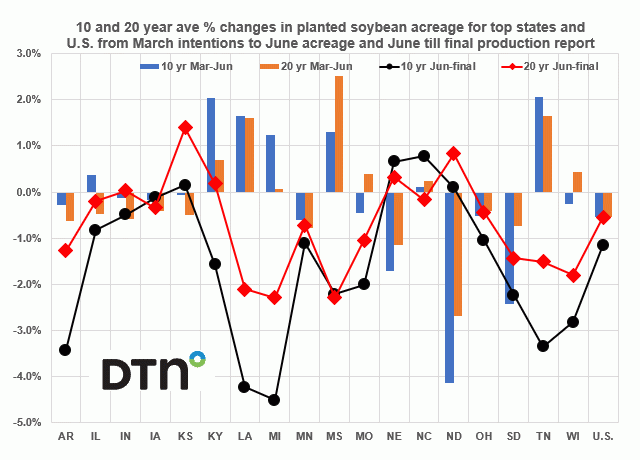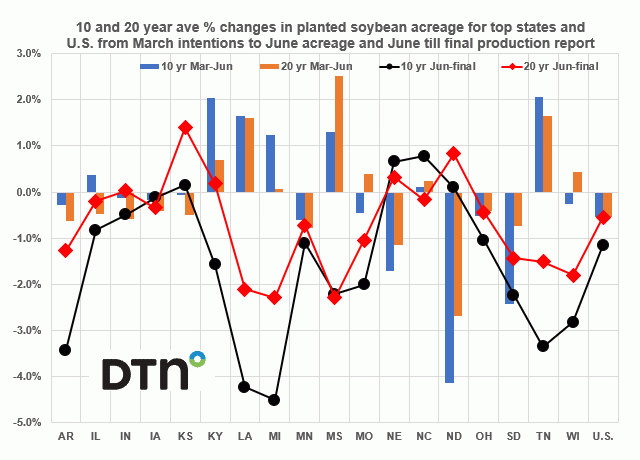Fundamentally Speaking
Dakotas Increasingly Accounting for Larger Percent of US Corn, Soybean Production
Last week at its Ag Outlook Forum, USDA said based on a weather-adjusted trend assuming normal planting progress and summer growing season weather, the 2022 U.S. corn yield is estimated at 181.0 bushels per acre (bpa) and for soybeans 51.5 bpa.
The corn yield would be a new high, exceeding this year's record by 4.0 bpa, while the forecasted soybean yield would be the second highest ever, above last year's 51.4 though still below the 51.9 peak seen in 2016, so one could say we are due for a new record high soybean yield.
P[L1] D[0x0] M[300x250] OOP[F] ADUNIT[] T[]
In fact, looking back at 2021 row crop yields, a record corn and second highest soybean yield ever is pretty remarkable in a season when yields in the Dakotas that have increasingly accounted for a greater percent of total national production over the years were abysmal due to severe drought.
This was particularly the case last year as seen in this graphic that shows North and South Dakota combined corn and soybean planted area as a percent of U.S. total acreage as reported in the USDA March intentions, June acreage and final production reports.
Over the years corn and soybean seedings have increased quite substantially in both North and South Dakota based on changing weather patterns, increased use of higher yielding short season seed varieties, better returns from those two crops as opposed to others that used to be seeded in that area of the country and likely some crop insurance considerations.
Back in 1995 combined Dakota corn acreage accounted for 4.9% of the U.S. total and soybeans 5.1%. Contrast that with 2021 where combined corn area was 11% of the national total and soybeans 14.6%, both the highest ever.
It appears that subsoil moisture conditions have improved in the Dakotas over the past few months, and hopefully that will result in better yields, though the dry conditions at plantings last year that unfortunately persisted all through the growing season did result in corn and soybean planted area to increase from the March to June to final USDA reports.
This was quite a difference from 2019 and 2020 where severe spring flooding resulted in total Dakota corn and soybean area as reported in the final production reports well below what farmers had intended back in March or even what the government tabulated in the June Acreage report.
(c) Copyright 2022 DTN, LLC. All rights reserved.





Comments
To comment, please Log In or Join our Community .